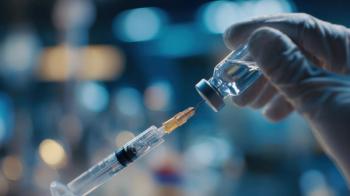
FDA Sets Review Date for Gene Therapy for Enzyme Deficiency
Upstaza is a one-time gene therapy to treat patients 18 months and older with AADC deficiency. It has a review date of Nov. 13, 2024.
The FDA has
Developed by PTC Therapeutics, Upstaza is a one-time gene therapy to treat patients 18 months and older with aromatic L-amino acid decarboxylase (AADC) deficiency, a fatal, rare genetic disorder that typically causes severe disability. It leads to metabolic disturbance of dopamine, norepinephrine, epinephrine, and serotonin. Children with AADC deficiency can experience seizure-like oculogyric crises (involving the eyes), frequent vomiting, behavioral problems, and difficulty sleeping.
AADC deficiency is caused by mutations of the DOPA decarboxylase (DDC) gene in which the AADC enzyme cannot perform its function in the formation neurotransmitters epinephrine and norepinephrine, dopamine and serotonin.
Upstaza is a recombinant adeno-associated virus serotype 2 (AAV2)-based gene therapy, containing the human DDC gene. It is designed to deliver a functioning DDC gene directly into the putamen, the part of the brain involved in learning and motor control. Administration of Upstaza is designed to increase the AADC enzyme and restore dopamine production.
"The data collected to date continue to support the transformative benefit of Upstaza, this highly innovative gene therapy directly infused into the brain,” Matthew B. Klein, M.D., CEO of PTC Therapeutics, said in a news release.
PTC Therapeutics had
Compared with baseline, at one year and five years after Upstaza, patients had evidence of dopamine productions visualized using PET imaging of the brain, as well as in motor milestones of head control, sitting unassisting, standing with support and walking with assistance. There were no serious adverse events. The most frequent adverse event was dyskinesia (involuntary movements), which resolved over time.
Upstaza was part of the pipeline of Agilis Biotherapeutics, which
Upstaza is approved in both the European Union and in the United Kingdom to treat AADC deficiency. Upstaza generated revenue in 2023; but PTC’s documents only indicated that sales from Tegsedi, Waylivra and Upstaza contributed $22.7 million in 2023. The company will be required to pay $20 million in regulatory milestone payments to the former equity holders of Agilis, as well as an additional $.4.5 million upon approval of Upstaza in the United States.
Administration of Upstaza occurs through a stereotactic surgical procedure, a minimally invasive neurosurgical procedure used for the treatment of a number of pediatric and adult neurological disorders. It uses a technology developed by ClearPoint Neuro for infusion into the brain. The Upstaza administration procedure is performed by a qualified neurosurgeon in centers specialized in stereotactic neurosurgery.
In October 2022, PTC Therapeutics had discussed the FDA its BLA for Upstaza. At that time, regulators had asked for additional bioanalytical data in support of comparability of the therapy used in trials with the commercial product, according to
Newsletter
Get the latest industry news, event updates, and more from Managed healthcare Executive.





















































